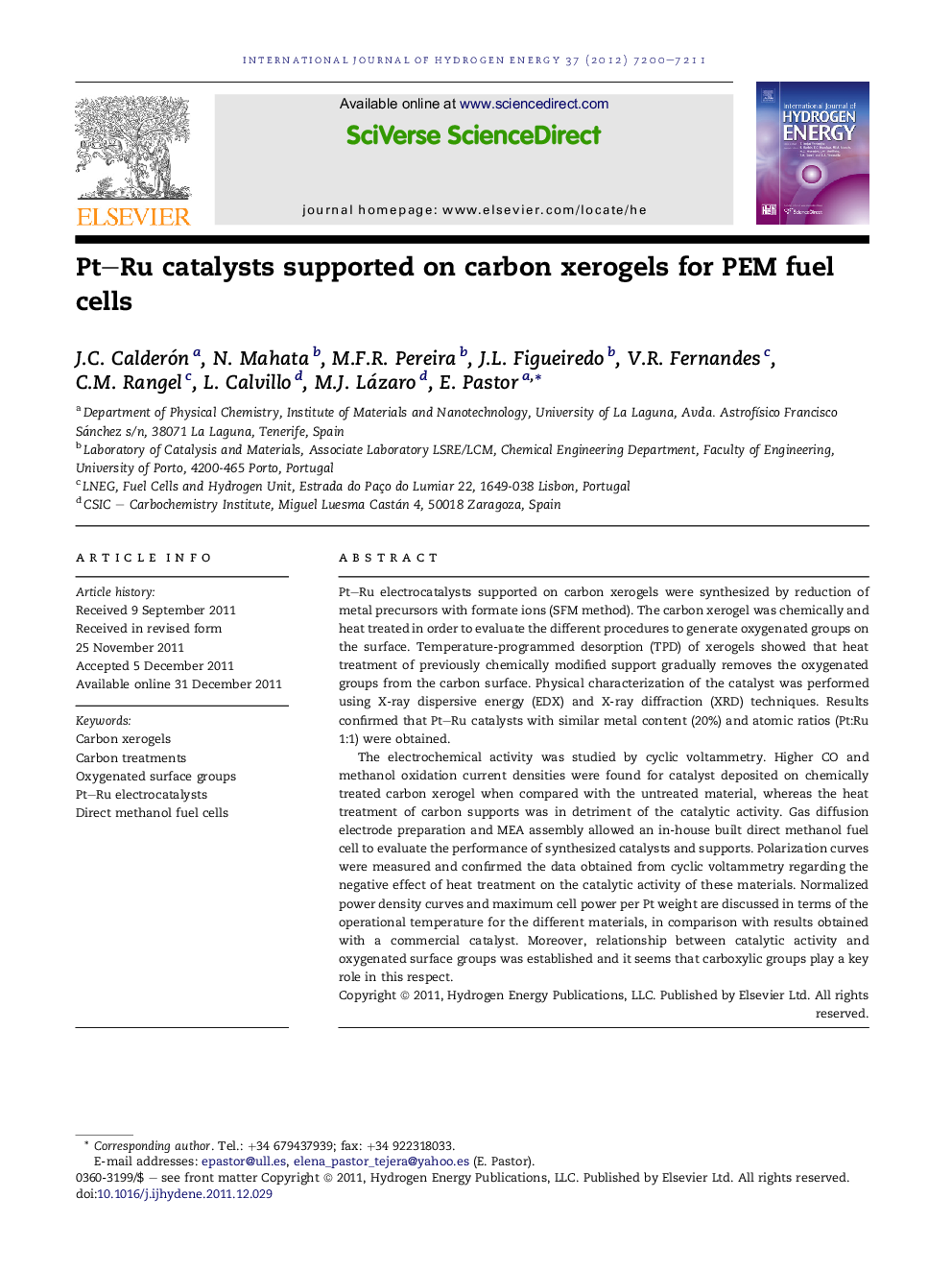| Article ID | Journal | Published Year | Pages | File Type |
|---|---|---|---|---|
| 1276666 | International Journal of Hydrogen Energy | 2012 | 12 Pages |
Pt–Ru electrocatalysts supported on carbon xerogels were synthesized by reduction of metal precursors with formate ions (SFM method). The carbon xerogel was chemically and heat treated in order to evaluate the different procedures to generate oxygenated groups on the surface. Temperature-programmed desorption (TPD) of xerogels showed that heat treatment of previously chemically modified support gradually removes the oxygenated groups from the carbon surface. Physical characterization of the catalyst was performed using X-ray dispersive energy (EDX) and X-ray diffraction (XRD) techniques. Results confirmed that Pt–Ru catalysts with similar metal content (20%) and atomic ratios (Pt:Ru 1:1) were obtained.The electrochemical activity was studied by cyclic voltammetry. Higher CO and methanol oxidation current densities were found for catalyst deposited on chemically treated carbon xerogel when compared with the untreated material, whereas the heat treatment of carbon supports was in detriment of the catalytic activity. Gas diffusion electrode preparation and MEA assembly allowed an in-house built direct methanol fuel cell to evaluate the performance of synthesized catalysts and supports. Polarization curves were measured and confirmed the data obtained from cyclic voltammetry regarding the negative effect of heat treatment on the catalytic activity of these materials. Normalized power density curves and maximum cell power per Pt weight are discussed in terms of the operational temperature for the different materials, in comparison with results obtained with a commercial catalyst. Moreover, relationship between catalytic activity and oxygenated surface groups was established and it seems that carboxylic groups play a key role in this respect.
► Pt–Ru catalyst supported on carbon xerogels were prepared for polymer electrolyte fuel cells. ► Different chemically and heat treated carbon xerogels were used as supports. ► Heat treatment temperature of the support influenced the catalytic activity on the Pt–Ru supported materials. ► Relationship between catalytic activity and oxygenated surface groups was established. ► Carboxylic groups seem to play a key role in the catalytic activity of materials.
